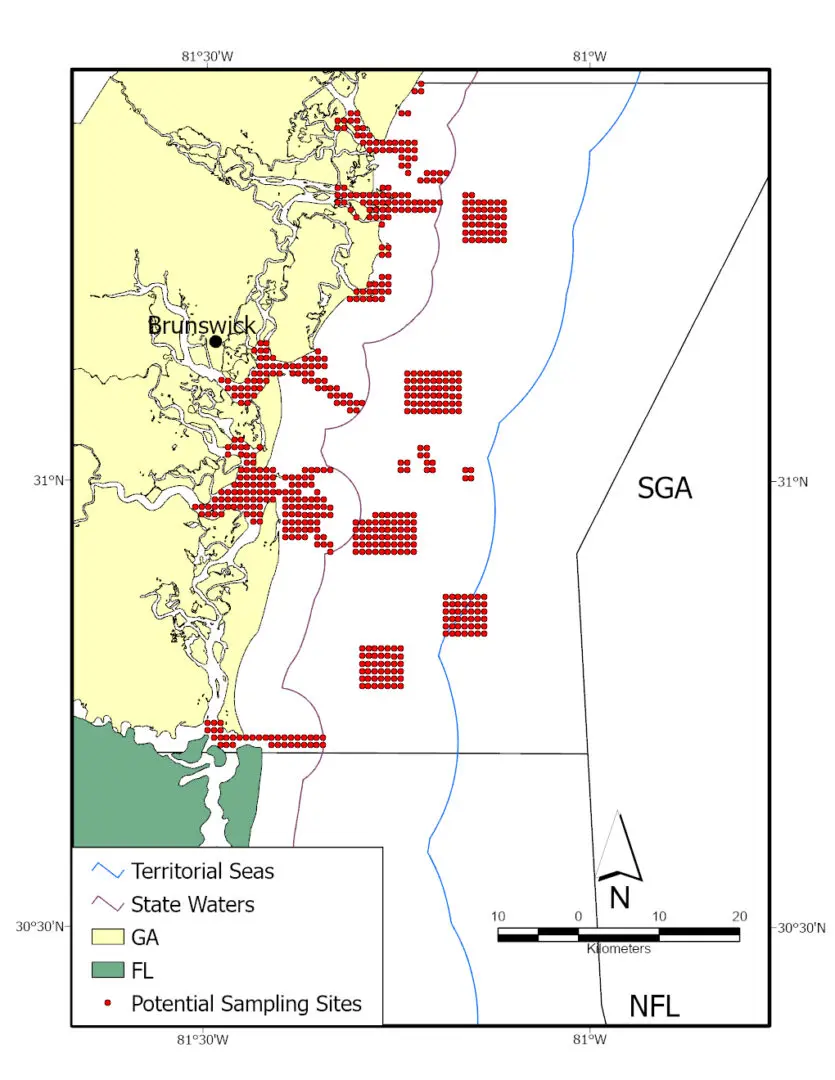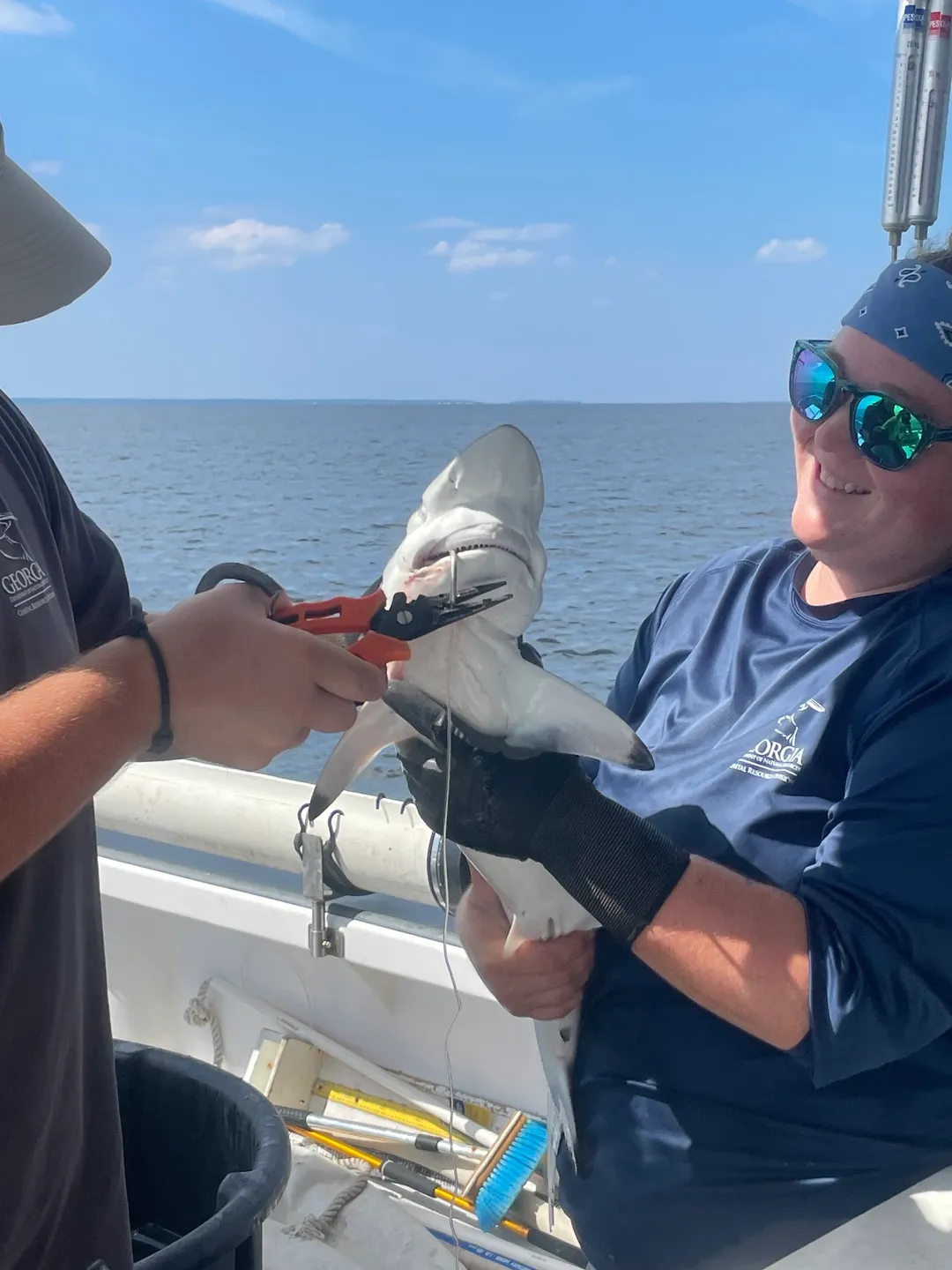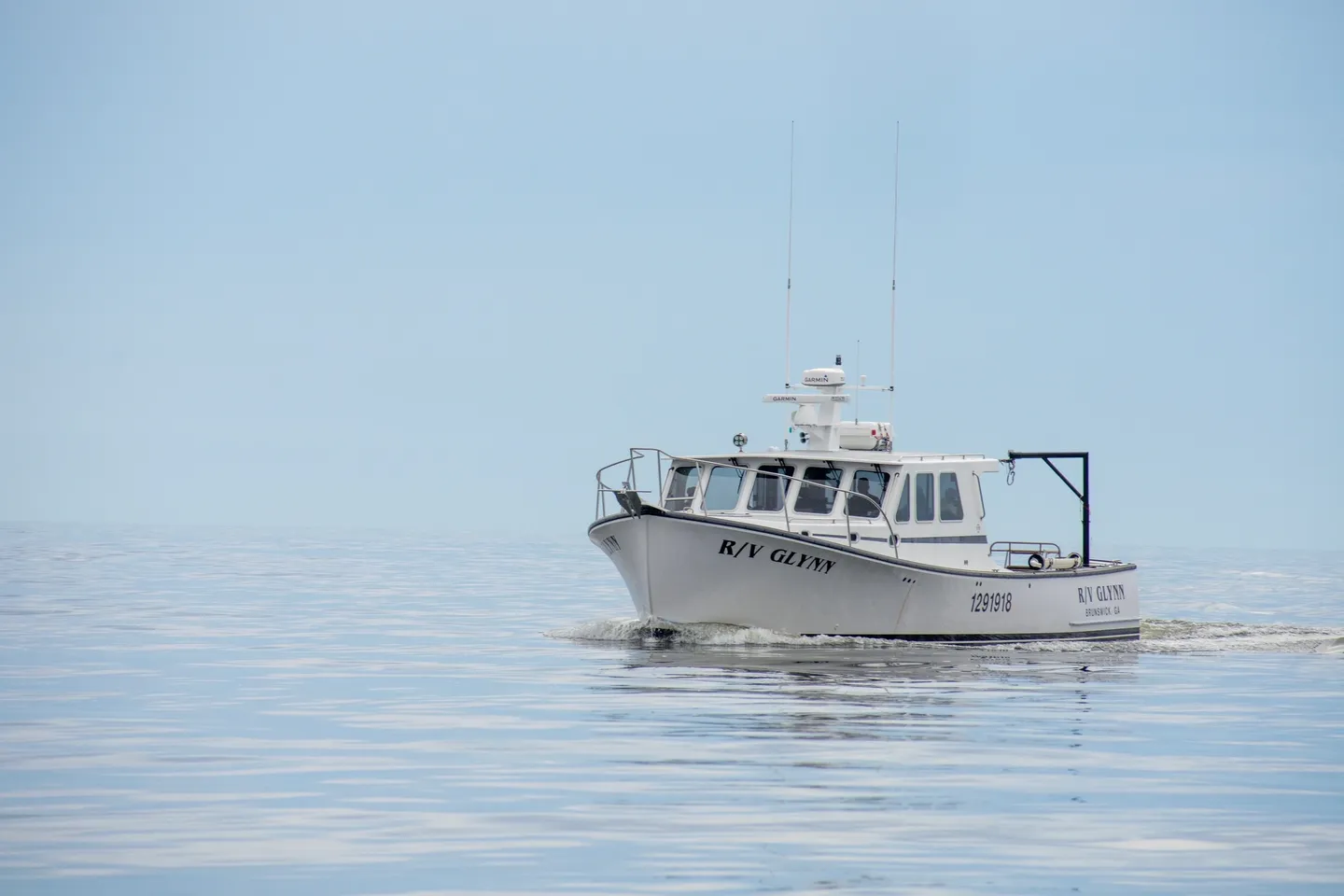
Coastal Longline Survey - Georgia
The Georgia Coastal Longline Survey is a NMFS-sponsored fishery independent survey conducted by the Georgia Department of Natural Resources Coastal Resources Division as a partnership component of SEAMAP South Atlantic. The pilot survey was initiated in fall of 2006 and has continued April through December annually.
The survey is designed to provide a long-term fishery-independent database on the distribution, relative abundance, catch per unit effort, and size distribution of adult red drum and sharks in the coastal and offshore waters of Georgia and Northeast Florida.
Survey Design
The original sampling area ranged from Hilton Head, SC to Ormond Beach, FL and was divided into four major regions (North Georgia – NGA, South Georgia – SGA, North Florida – NFL, and South Florida – SFL). Each region was further divided into strata based on distance from shore (estuary, 0-3nm, 3-12nm and < 12 nm). This large 3,900 nm² sampling area proved impractical given the limited resources available. Presently, the South Georgia and North Florida regions are sampled out to 12 nm with a stratified-random sampling design. A total of 35 ½ x ½ nm grids are randomly selected each month (Figure 1).
Site selection varies based on season. During April to August, coastal sharks dominate catches and a simple random-stratified design is employed. Red drum are more prevalent in the fall and sampling allocation shifts from the estuaries to the coastal artificial reefs to maximize encounter rates as the season progresses and fish migrate to deeper offshore waters.
All sampling is conducted during daylight hours with soak times maintained at 30 minutes. Samples are collected on a ½ nm (926 m) mainline with 60 hooks per set baited with cut Pacific squid fins. CPUE is calculated as fish per hook so results are comparable with neighboring states. Surface environmental conditions (water temperature (°C), salinity (ppt), and dissolved oxygen (mg/L) are recorded for each set.
At each site, red drum are measured (nearest mm), weighed, a fin clip collected for genetic studies, condition recorded, and tagged with dart and Passive Integrated Transponder (PIT) tags prior to release. Similarly, shark species are measured weighed, sexed, condition and maturity recorded, tagged with a roto and harpoon tag and released. All other species are enumerated.


Changes to the Survey
At the beginning of the 2016 funding cycle NOAA technical monitors for SEAMAP requested stronger standardization of the state conducted longline surveys. Since Georgia and South Carolina were the most similar in design and South Carolina has the longer time series, Georgia agreed to make changes to its survey design. The key differences addressed included hook size and bait type. Georgia had been using two hook sizes (12/0 and 15/0) and squid wings for bait, whereas South Carolina used only 15/0 hooks and mullet for bait. During 2016, Georgia standardized the hook size to 15/0 and began collecting data to examine the effects of changing from squid to mullet.
During 2016, a SEAMAP workgroup was formed to discuss options to modify sampling in Georgia to account for work force constraints and budget reductions. Possible solutions examined changes in season length, changing in periodicity of sampling activities, and eliminating Florida sampling. They also considered combinations of changes. During discussions, it became clear that the longline survey was multi-faceted and although it was originally designed to sample adult Red Drum, it had developed importance for coastal shark species assessments. As such, it became clear that suggested changed would need to ensure the integrity of the time series for both Red Drum and coastal sharks. The final recommendations from the workgroup were implemented in 2018 and resulted in the following changes:
Sampling in FL waters was eliminated
Sampling season was adjusted, eliminating sampling in April in May
Sampling periodicity changed from monthly to six-week periods
35 stations were sampled per period
Contact
For more information regarding the Georgia Coastal Longline Survey please contact Donna McDowell.

